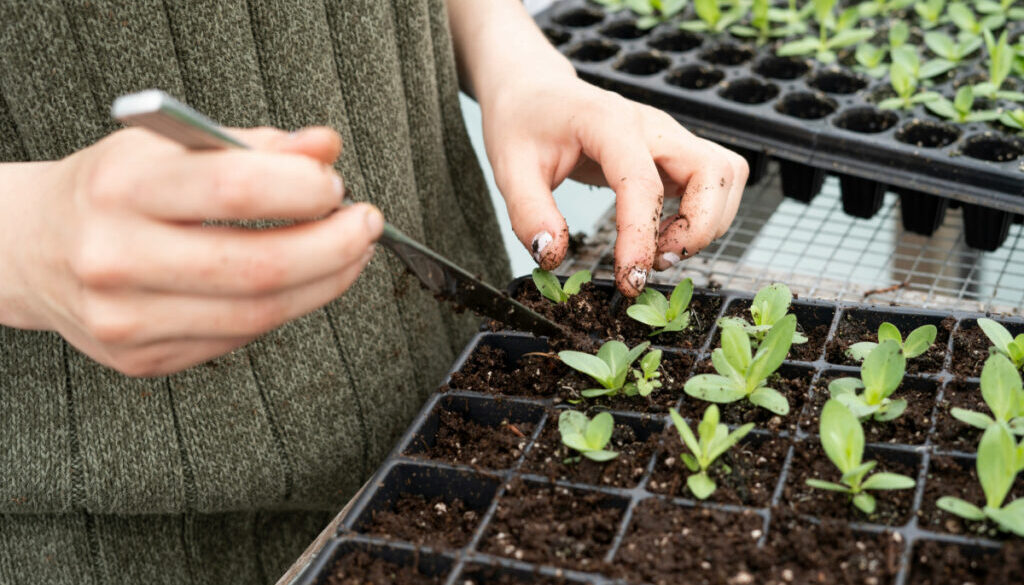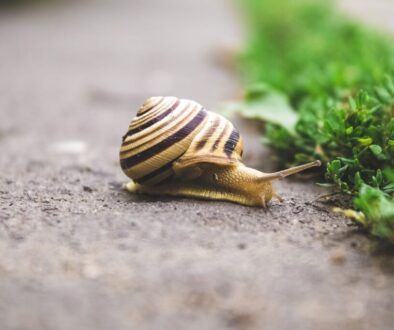5 Perfect Seeds to Kickstart Your January Garden
Why January is Ideal for Indoor Seed Starting
When the frost is biting and your garden beds lie dormant, January might seem like an odd time to think about planting. But for gardeners in the know, it’s the perfect moment to get ahead by starting seeds indoors. It’s not just practical—it’s also a fun and rewarding way to brighten up those winter days. Let’s dive into why this chilly month is a golden opportunity to kick off your gardening season.
1. Start the Year Fresh—Literally!
January offers a clean slate, and what better way to embrace that than by sowing seeds? Indoor seed starting gives you a head start on the growing season, setting the stage for earlier harvests and blooms. Think of it as planting the seeds (pun intended!) for a year of gardening success. Plus, the satisfaction of watching tiny sprouts emerge from the soil can give you a much-needed mood boost during the darkest days of winter.
And here’s the best part: you don’t need a lot of space or fancy equipment. A sunny windowsill, a few seed trays, and some soil are enough to get started. Whether it’s tomatoes, peppers, or even herbs like basil, growing indoors lets you enjoy the thrill of gardening while staying warm and cozy inside.
2. Beat the Winter Blues
Let’s face it—January can feel a bit dreary. The holiday cheer has faded, and spring still feels a long way off. Starting seeds indoors is like creating your little slice of spring in the middle of winter. The sight of green shoots emerging from the soil is enough to make anyone smile.
Gardening indoors also helps you stay active and connected to nature during the colder months. It’s a hands-on activity that gets you away from screens and into something creative and life-affirming. You’ll be amazed at how calming it is to tend to your seedlings, even if you’re just misting them with water or turning their trays to catch more sunlight.
3. Stay Ahead of the Growing Game
One of the biggest perks of starting seeds in January is the head start it gives your plants. Many seeds, like tomatoes, peppers, and eggplants, require a long growing season. By starting them indoors now, you’re giving them extra time to mature before they’re transplanted outdoors. This means you’ll be harvesting juicy tomatoes or spicy peppers weeks before your neighbors.
Think of it as an investment in your future garden. When spring finally arrives, you’ll already have strong, healthy seedlings ready to hit the ground running. No scrambling to buy transplants at the garden center—your plants will already be one step ahead. And the best part? You can grow unique varieties that you won’t find in stores. From heirloom tomatoes to exotic flowers, the options are endless when you start from seed.
4. The Perfect Time to Experiment
January is the perfect month to try something new. Since you’re starting indoors, there’s less pressure to get everything right immediately. You can experiment with different seed types, try new soil mixes, or test various lighting setups without worrying about the weather ruining your efforts.
Have you always wanted to grow chilies but felt intimidated? Or maybe you’ve been dreaming of a windowsill herb garden? January is your time to play, learn, and grow. Even if something doesn’t go as planned, you have plenty of time to adjust before the outdoor growing season begins.
5. Make It a Family Affair
Indoor seed starting in January isn’t just productive—it’s also a fantastic way to involve the whole family. Kids love the magic of planting seeds and watching them sprout, and it’s a great opportunity to teach them about how plants grow. Set up a seed-starting station with some soil, seeds, and small containers, and let them get their hands dirty.
Even if you’re flying solo, the process can be incredibly rewarding. It’s a chance to slow down, connect with nature, and cultivate a little joy during the winter months. With each sprout, you’ll feel a sense of accomplishment and excitement for what’s to come.
Top 5 Seeds for a Productive Year Ahead
If you’re dreaming of a lush garden filled with vibrant veggies, fragrant herbs, and stunning blooms, January is the time to start planting. Indoor seed starting gives you the perfect head start to a productive gardening year. But with so many seeds to choose from, which ones will set you up for success? Don’t worry—I’ve got you covered. Here are the top five seeds to grow now for a flourishing garden later.
1. Tomatoes: The Star of Every Garden
Tomatoes are like the MVP of gardening. Whether you’re a salad lover, a pasta enthusiast, or enjoy snacking, fresh tomatoes are a must-have. Starting them in January ensures they have enough time to grow strong and produce juicy fruits all summer.
Cherry tomatoes are a great choice if you’re short on space since they can grow in pots. For those with more room, beefsteak tomatoes are a delicious option. You’ll love watching your seedlings grow into towering plants that are heavy with fruit. Plus, nothing beats the flavor of a sun-warmed tomato straight from the vine!
Pro tip: Give your tomato seedlings plenty of light—around 12-16 hours a day. A sunny window or grow lights work wonders.
2. Peppers: Sweet or Spicy, Your Choice
Peppers are another winner when it comes to productive gardening. Sweet bell peppers and spicy chili varieties both benefit from an early start in January. These plants take their time to grow, so giving them a head start indoors will reward you with a bountiful harvest.
Imagine picking a rainbow of colorful bell peppers for stir-fries or grabbing a fiery chili for homemade hot sauce. Starting now also gives you the chance to explore unique varieties, like purple bell peppers or smoky chipotle chilies.
Peppers thrive in warmth, so make sure to keep their soil consistently moist and place them in a cozy spot. You’ll be amazed at how quickly they’ll become garden favorites.
3. Basil: The Herb That Keeps on Giving
If there’s one herb you can’t go wrong with, it’s basil. This fragrant, fast-growing herb is a kitchen superstar, perfect for everything from pesto to pizza toppings. Starting basil indoors in January ensures you’ll have fresh leaves ready to pick well before spring.
Basil grows happily in small pots on a sunny windowsill, making it ideal for indoor gardeners. Plus, it’s one of those plants that thrive when you trim it. The more you harvest, the bushier it gets.
Want to mix things up? Try planting different varieties like lemon basil, Thai basil, or even cinnamon basil. Your taste buds will thank you.
4. Lettuce: Quick, Easy, and Always Useful
If patience isn’t your strong suit, lettuce is your best friend. These leafy greens grow quickly, making them perfect for gardeners who want instant gratification. By starting lettuce seeds indoors now, you’ll have fresh salads on your plate in just a few weeks.
The great thing about lettuce is its versatility. You can grow butterhead varieties for tender leaves or romaine for crispy crunch. Even if you’re short on space, lettuce thrives in small containers, making it a great choice for apartment dwellers.
Keep your seedlings in a cool, bright spot and water them regularly. You’ll love having fresh greens at your fingertips without even stepping outside.
5. Marigolds: Your Garden’s Best Friend
Let’s not forget about flowers! Marigolds are more than just pretty—they’re also incredibly practical. These bright, cheerful blooms are natural pest repellents, making them perfect companions for your veggies.
By starting marigold seeds in January, you’ll have strong plants ready to add color and protection to your garden beds come spring. Plus, marigolds are super easy to grow, making them a great choice for beginners.
Choose from vibrant orange, yellow, or even bi-colored varieties to create a garden that’s as stunning as it is functional. Your veggies will thank you for the extra help in keeping pests at bay.
Caring for Tender Seedlings in Winter
Congratulations—you’ve started your seeds, and now those tiny sprouts are peeking through the soil. But winter can be a tricky time for young plants, and they need a little extra love to thrive. Don’t worry; with the right care, your tender seedlings will grow into strong, healthy plants ready to take on the world. Let’s look at how you can keep them happy and thriving during the colder months.
1. Light It Up: Your Seedlings Need Sunshine
Seedlings are like little sunbathers—they can’t get enough light! In winter, natural sunlight can be hard to come by, especially with shorter days and gloomy weather. To keep your seedlings strong, aim to give them 12-16 hours of light each day.
If your windowsills are bright and sunny, you’re in luck! But if not, don’t worry. Grow lights are your best friend. These handy tools mimic sunlight and give your seedlings exactly what they need. Position the lights about 2-3 inches above your plants and adjust them as your seedlings grow taller.
Pro tip: Rotate your seedlings every few days if you’re relying on sunlight. This keeps them from leaning too much in one direction and helps them grow straight and strong.
2. Keep Them Cozy: Temperature Matters
Seedlings love warmth almost as much as they love light. Most varieties thrive in temperatures between 65°F and 75°F (18 Celsius), so keeping your indoor space consistent is key. Drafty windows or cold rooms can stress out your young plants, so it’s best to avoid those spots.
If your home runs a little chilly, consider using a seedling heat mat. These mats provide gentle warmth from below, mimicking the toasty soil conditions seeds love. They’re especially helpful for heat-loving plants like tomatoes and peppers.
One more tip: Avoid placing seedlings too close to radiators or heaters. While they love warmth, dry, hot air can be too harsh and may damage their delicate leaves.
3. The Goldilocks Rule: Water Just Right
Watering seedlings in winter can feel like walking a tightrope—you don’t want to overdo it, but you don’t want to neglect them either. The key is finding that sweet spot where the soil stays evenly moist without becoming soggy.
Before watering, check the top layer of soil with your finger. If it feels dry to the touch, it’s time to water. Pour gently and evenly, letting the water soak through without flooding your plants. Seedlings are delicate, so avoid splashing water directly on their leaves.
Humidity is also crucial, especially in winter when indoor air tends to be dry. Placing a humidity dome or clear plastic cover over your seedlings can help maintain the right moisture levels. Just be sure to remove the cover occasionally to prevent mold or mildew from forming.
4. Give Them Space to Breathe
As your seedlings grow, they’ll need enough space to stretch their leaves and roots. Crowded seedlings compete for light, water, and nutrients, which can lead to weak, spindly plants.
If you notice your seedlings starting to overlap or grow too close together, it’s time to thin them out. Snip the weaker seedlings at the base with scissors, leaving the strongest ones to thrive. It might feel tough to cut down a plant, but trust me—your garden will thank you later.
For plants growing in seed trays, consider transplanting them into larger pots once they develop a second set of leaves. This gives their roots more room to grow and ensures they’ll be healthy when it’s time to move them outdoors.
5. Show Them Some Love: Fertilize Wisely
Seedlings are like growing kids—they need the right nutrients to thrive. After your seedlings have their first true leaves (the ones that come after the initial baby leaves), it’s time to start feeding them.
Use a diluted, balanced liquid fertilizer to give your seedlings a gentle nutrient boost. A quarter-strength dose every 1-2 weeks is usually plenty. Over-fertilizing can do more harm than good, so start small and watch how your plants respond.
Organic options like fish emulsion or seaweed fertilizer are great choices if you’re looking to keep things natural. Just remember: happy seedlings are well-fed but not overwhelmed!
Timing Your Transplants for Spring Success
Starting seeds indoors is only half the battle—knowing when to move them outdoors is the real game-changer. Get the timing right, and your plants will thrive. Get it wrong, and they might struggle to grow, or worse, succumb to the elements. Don’t worry, though! With a little planning, you’ll have your seedlings ready to transition to the great outdoors like pros. Let’s dive into how to master the art of transplant timing for spring success.
1. Know Your Last Frost Date
Your local last frost date is like a secret code for gardening success. It tells you when the risk of frost is over and your plants can safely be outside. You can easily find this date online or check with your local extension service. Mark it on your calendar—it’s your golden ticket to a thriving garden.
Different plants have different frost tolerances, so it’s important to know your seedlings’ needs. Cool-weather crops like lettuce and broccoli can handle light frosts, so they’re the early birds of the garden. On the other hand, heat-loving plants like tomatoes and peppers won’t survive even a hint of frost, so they’ll need to wait until after the last frost to go outside.
Pro tip: Keep an eye on the weather forecast, even after the frost date. A late-season cold snap can sneak up on you!
2. Harden Off Like a Pro
Your seedlings have been living a cozy indoor life, shielded from wind, sun, and chilly nights. If you toss them straight into the garden, it’s like throwing them into a boot camp—they won’t know what hit them! That’s where hardening off comes in.
Hardening off is the process of gradually introducing your seedlings to outdoor conditions. About one to two weeks before transplanting, start placing them outside for a few hours a day. Begin in a sheltered, shady spot and gradually increase their time outdoors and exposure to sunlight.
By the end of the hardening-off period, your plants will be toughened up and ready to handle outdoor life. It’s like prepping them for their big debut on the garden stage!
3. Check the Soil Temperature
Soil temperature matters just as much as air temperature when it comes to transplant timing. Even if the air feels warm, cold soil can stunt plant growth or even damage roots.
Use a soil thermometer to check the temperature in your garden beds. Most cool-weather crops are happy to transplant when the soil is at least 40–50°F (10 Celsius), while warm-weather plants prefer soil temperatures above 60°F (15.5 Celsius). If you’re eager to get started but your soil is still cold, consider using black plastic or row covers to warm it up faster.
Trust me, your seedlings will thank you for waiting until the conditions are just right!
4. Time of Day Matters, Too
When you’re ready to transplant, the time of day can make a big difference. Avoid planting during the heat of the day when the sun is strongest, as this can stress your seedlings. Instead, aim for late afternoon or early evening when it’s cooler and less sunny.
Transplanting in the evening gives your plants a chance to settle in overnight without the stress of direct sunlight. Pair that with a gentle watering after planting, and your seedlings will feel like they’ve checked into a 5-star garden hotel.
5. Pay Attention to Spacing
As you’re transplanting, be sure to give each plant enough room to grow. Crowded plants compete for sunlight, water, and nutrients, which can lead to weaker growth and lower yields.
Check the seed packet or plant tag for recommended spacing and follow it closely. Even though it might feel like you’re leaving a lot of empty space in your garden, your plants will fill it in as they grow. Patience pays off when it comes to spacing!
Timing is Everything
Transplanting seedlings is one of the most exciting parts of gardening, but it’s also where timing truly matters. Knowing your last frost date, hardening off your plants, and checking soil temperatures all play a role in ensuring your plants thrive.
By taking the time to get it right, you’re setting your garden up for a productive and healthy growing season. So, grab your calendar, check the weather, and give your seedlings the best start they can get. Your garden will thank you with blooms, harvests, and plenty of green goodness!
Happy Gardening!




